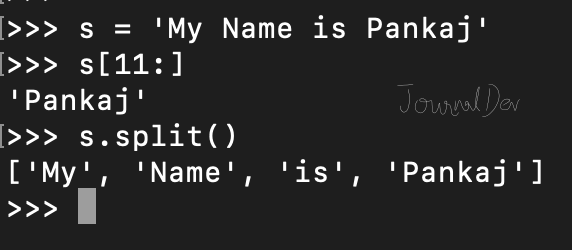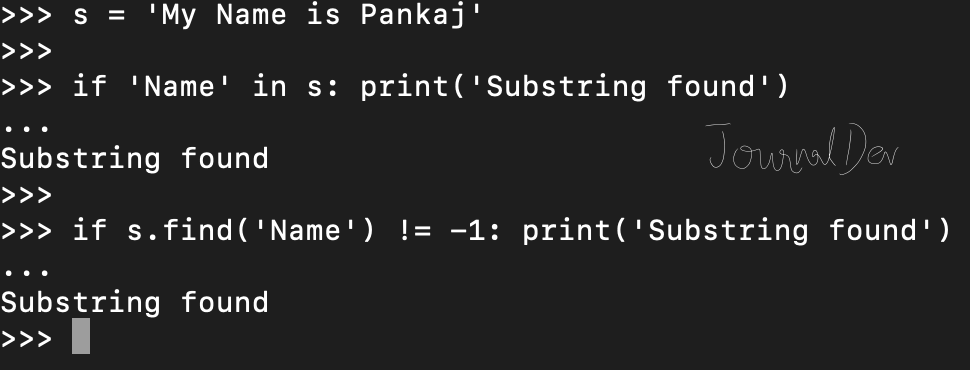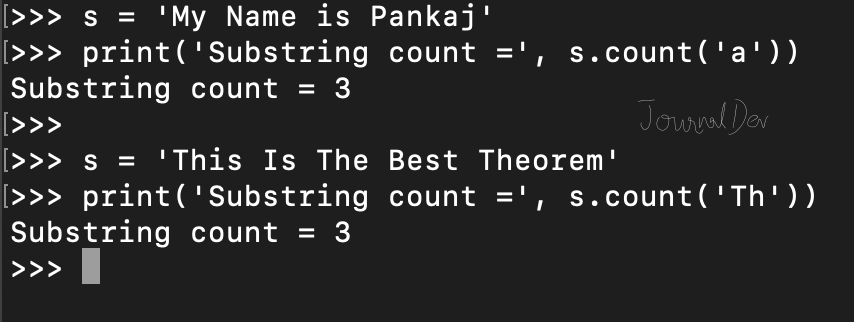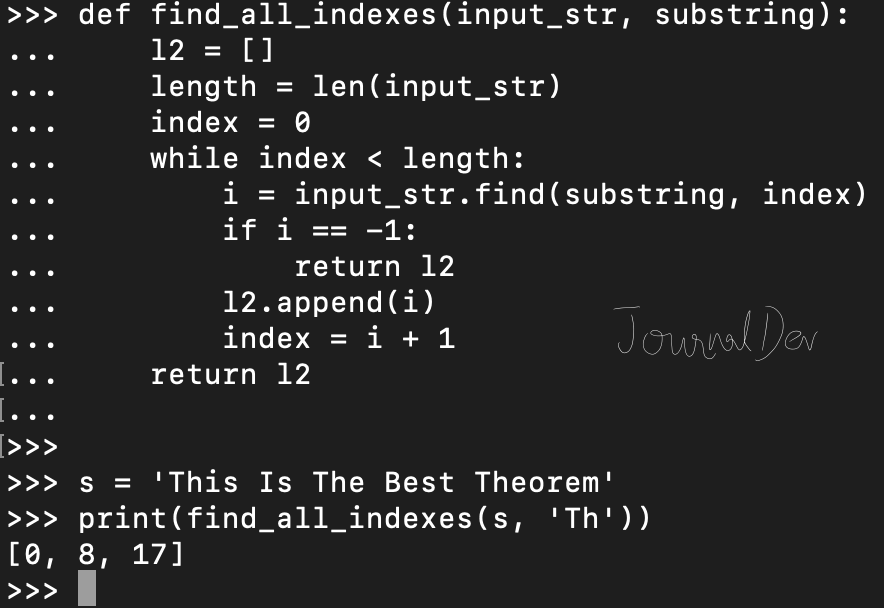Python 字符串提供了创建字符串的各种方法,检查它是否包含字符串,字符串的索引等 在本教程中,我们将研究与字符串相关的各种操作。
Python String 字符串
首先,让我们看看创建底层的两种不同的方式。
创建一个Substring
我们可以使用 string slicing来创建一个基于指定的分界器的字符串列表。
1s = 'My Name is Pankaj'
2
3# create substring using slice
4name = s[11:]
5print(name)
6
7# list of substrings using split
8l1 = s.split()
9print(l1)
输出:
1Pankaj
2['My', 'Name', 'is', 'Pankaj']

检查是否找到底线
我们可以使用 in 操作符或 find() 函数来检查字符串是否存在。
1s = 'My Name is Pankaj'
2
3if 'Name' in s:
4 print('Substring found')
5
6if s.find('Name') != -1:
7 print('Substring found')
Note that find() function returns the index position of the substring if it's found, otherwise it returns -1. 
Substring 事件的计数
我们可以使用 count() 函数来查找字符串中某个字符串的发生次数。
1s = 'My Name is Pankaj'
2
3print('Substring count =', s.count('a'))
4
5s = 'This Is The Best Theorem'
6print('Substring count =', s.count('Th'))
输出:
1Substring count = 3
2Substring count = 3

查找所有索引的 substring
没有内置的函数来获取字符串的所有索引列表,但是,我们可以使用 find() 函数轻松定义一个。
1def find_all_indexes(input_str, substring):
2 l2 = []
3 length = len(input_str)
4 index = 0
5 while index < length:
6 i = input_str.find(substring, index)
7 if i == -1:
8 return l2
9 l2.append(i)
10 index = i + 1
11 return l2
12
13s = 'This Is The Best Theorem'
14print(find_all_indexes(s, 'Th'))
Output: [0, 8, 17] 
您可以从我们的 GitHub 存储库中查阅完整的 Python 脚本和更多 Python 示例。